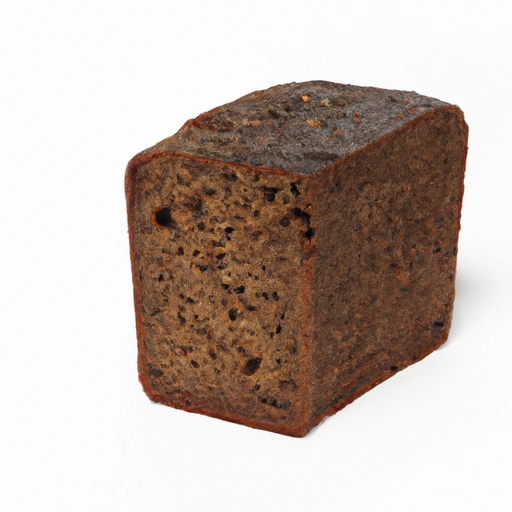Pumpernickel
Description

Pumpernickel is a type of rye bread that is traditionally made with coarsely ground rye flour and rye berries. Its distinct dark color and dense, hearty texture makes it a unique and flavorful ingredient in many dishes. Often associated with German cuisine, pumpernickel has become a beloved bread variety around the world. In recipes, you'll find pumpernickel being used in various units, including grams and ounces (oz) in European and American recipes, respectively, and cups for volume measurements.
Common uses
Pumpernickel is commonly used as a base for canapés, sandwiches, and as an accompaniment to soups and stews. It's also popular as a component in stuffing or as breadcrumbs for various dishes. Additionally, it's served as a part of traditional platters alongside cheeses, cold cuts, and pickles.
Nutritional value
Calories
Approximately 250 calories per 100g (3.5 oz).
Protein
Contains about 8.5g of protein per 100g (3.5 oz).
Fat
Low in fat, with around 2g per 100g (3.5 oz).
Carbohydrates
Contains about 50g of carbohydrates per 100g (3.5 oz), primarily from complex carbs.
Vitamins
Rich in B vitamins, particularly niacin, riboflavin, thiamin, and vitamin B6.
Minerals
Provides minerals such as iron, magnesium, phosphorus, potassium, and zinc.
Health benefits
Pumpernickel bread is high in fiber, which can aid in digestion and help maintain a healthy gut. The complex carbohydrates present in pumpernickel are known for providing long-lasting energy. Its low glycemic index makes it a favorable choice for those managing blood sugar levels.
Potential risks
While pumpernickel is a healthy food choice for many, those with gluten sensitivities or celiac disease should avoid it due to its gluten content. Additionally, because it is high in carbohydrates, it may not be ideal for low-carb diet plans.
Common recipes
Pumpernickel is often used in traditional German recipes such as Schwarzbrot, as well as in sandwiches like the classic Reuben. It's also a key ingredient in some variations of bread pudding and croutons.
Cooking methods
Typically, pumpernickel bread is made by combining coarse rye flour with rye sourdough starter, shaping it into loaves, and baking it at a low temperature for an extended period.
Pairing with other ingredients
Pumpernickel pairs well with strong flavors such as smoked salmon, cured meats, aged cheeses, and tangy spreads like mustards or horseradish cream.
Summary
Pumpernickel is a robust and flavorful bread that is integral to German cuisine and enjoyed worldwide. Its dense texture and unique taste make it versatile for various culinary applications, from sandwiches to side dishes. Nutritionally, it offers substantial health benefits due to its high fiber content and complex carbohydrates. However, as with all foods, pumpernickel should be consumed in moderation and may not be suitable for all dietary requirements.